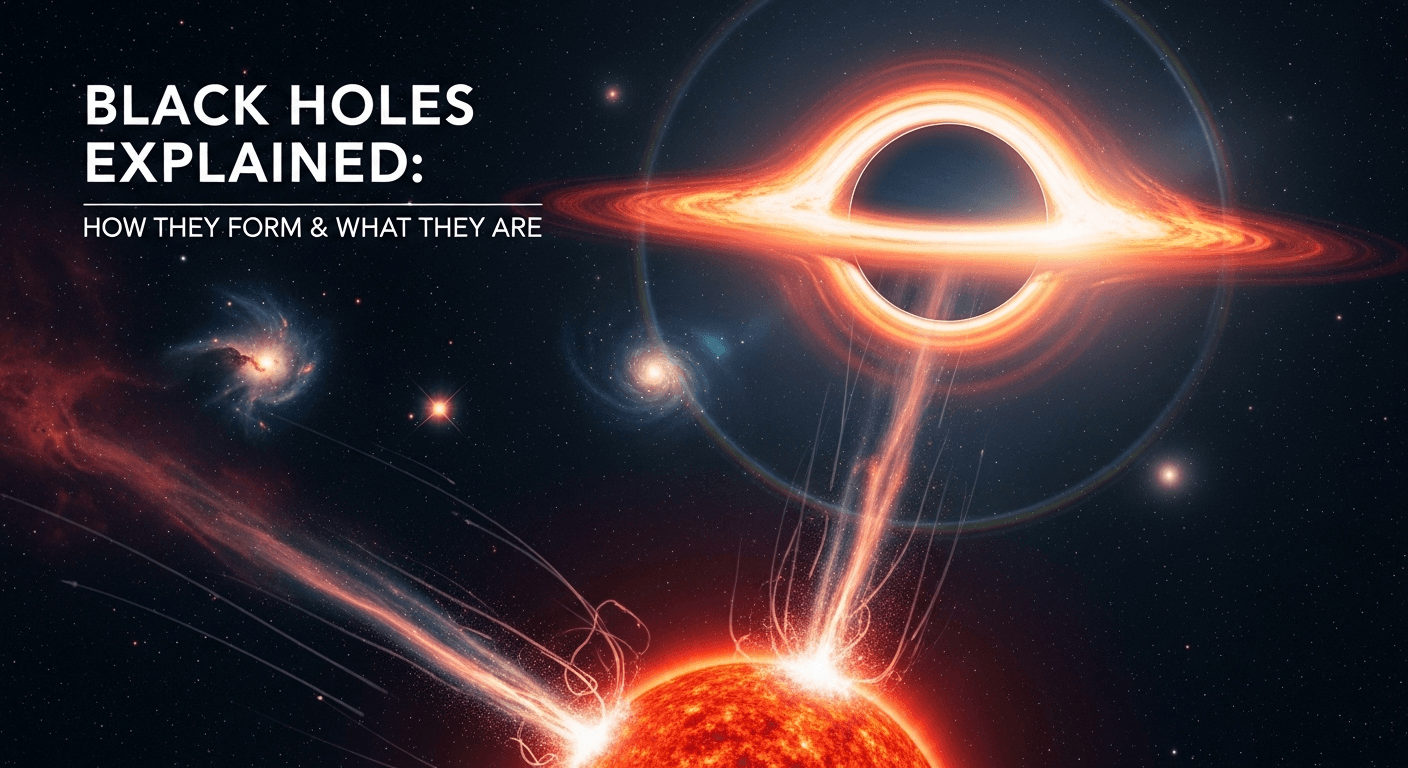The cosmos is filled with wonders that defy our everyday intuition, and perhaps none are more enigmatic or captivating than black holes. These celestial objects represent the absolute extremes of gravity, bending the very fabric of space and time to their will. For decades, they existed only in the equations of theorists, but today, we have photographic evidence of their existence, confirming their place as one of the universe's most fundamental and fascinating components. Understanding how do black holes form and what are they is not just an academic exercise; it’s a journey to the edge of physics, pushing the boundaries of what we know about reality itself. This article will explore the cosmic origins, bizarre properties, and profound implications of these gravitational behemoths. What Exactly is a Black Hole? At its core, a black hole is a region in spacetime where gravity is so overwhelmingly strong that nothing—not even light, the fastest thing in the universe—can escape. This is not a "hole" in the traditional sense, like a void or an empty space. Instead, it is an immense amount of matter packed into an impossibly small area, creating a gravitational field of incredible intensity. The concept was first predicted by Albert Einstein's theory of general relativity in 1915, which showed how massive objects could warp the geometry of spacetime. A black hole represents the most extreme manifestation of this principle. The defining feature of a black hole is its event horizon. This is not a physical surface you could touch, but rather a one-way boundary in space. Once an object, a particle, or a ray of light crosses the event horizon, its fate is sealed. The escape velocity—the speed needed to break free from the gravitational pull—at the event horizon exceeds the speed of light. Since nothing can travel faster than light, escape becomes a physical impossibility. Think of it like a cosmic waterfall: you can safely float on the river far upstream, but once your boat goes over the edge, there is no turning back. The event horizon is that point of no return. Beyond the event horizon lies the singularity. According to general relativity, the singularity is the central point of a black hole where all its mass is concentrated into a region of zero volume and infinite density. Here, the laws of physics as we currently understand them completely break down. Our theories of gravity and quantum mechanics, the two pillars of modern physics, cannot describe what happens at a singularity. It is a place where space and time cease to have meaning, representing one of the greatest unsolved mysteries in science. The Cosmic Forge: How Black Holes Form Black holes are not born from nothing; they are the final evolutionary stage of some of the universe's most massive objects and processes. Their formation is a story of cosmic violence, gravitational collapse, and the ultimate triumph of gravity over all other forces. Scientists classify black holes into different categories based on their mass and origin, with each type having a distinct formation pathway. From the death throes of giant stars to the mysterious heart of galaxies, the creation of a black hole is always a monumental event. Stellar-Mass Black Holes: The Death of Giants The most common way a black hole is formed is through the death of a massive star. Not just any star can become a black hole; it requires a star with a core mass at least three times that of our own Sun (and an initial total mass of around 20-25 times the Sun's). Throughout its life, a massive star is in a constant battle with itself. The outward pressure from the nuclear fusion in its core, which generates tremendous energy, perfectly balances the inward crush of its own immense gravity. This delicate balance, known as hydrostatic equilibrium, can last for millions of years. However, this cannot last forever. Eventually, the star exhausts the nuclear fuel in its core. With the fusion furnace switched off, the outward pressure vanishes, and gravity instantly wins the battle in a catastrophic fashion. The star's core implodes in a fraction of a second, collapsing under its own weight. This rapid collapse triggers a gargantuan explosion known as a supernova, which blasts the star's outer layers into space, shining brighter than an entire galaxy for a brief period. What happens to the core depends on its mass. If it's not massive enough, it becomes a super-dense object called a neutron star. But if the core's mass is more than about three solar masses, not even the forces between neutrons can halt the collapse. The core continues to compress relentlessly, crushing itself down past the point of a neutron star into an object of unimaginable density—a singularity. As the core shrinks, its gravity intensifies until it becomes so strong that the escape velocity on its surface exceeds the speed of light. At this moment, an event horizon forms around the singularity, and a stellar-mass black hole is born. These black holes are typically 5 to a few dozen times the mass of the Sun and are found scattered throughout galaxies like our own. Supermassive Black Holes (SMBHs): The Galactic Anchors At the heart of most, if not all, large galaxies lurks a monster of a different kind: a supermassive black hole (SMBH). These behemoths have masses ranging from millions to billions of times that of our Sun. Our own Milky Way galaxy hosts an SMBH at its center, named Sagittarius A (pronounced "A-star"), which has a mass of about 4 million Suns. The Event Horizon Telescope collaboration famously captured the first-ever image of an SMBH's shadow in the galaxy M87 in 2019, an object with a mass of 6.5 billion Suns. The formation of SMBHs is one of the biggest puzzles in modern astrophysics. They are too large to have been formed from a single star's collapse, and they appear to have existed very early in the universe's history, when there may not have been enough time





